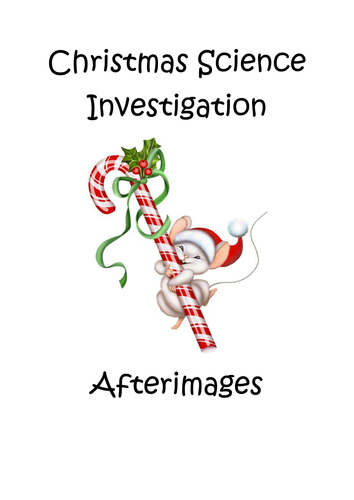
An original Christmas science investigation that requires minimal preparation of resources and is ideal for that final lesson before the Christmas holiday/vacation begins!
In this investigation, students are asked to stare at an image relating to Christmas. Some examples are provided in the resource (e.g. holly, santa, christmas tree baubles, etc) but you could supplement these with your own if desired. Gradually, light sensitive cones in the retina of the eye become fatigued causing the appearance of a ghostly afterimage in the field of view for a few seconds/minutes afterwards. Quite literally, students will see the apparition of a giant christmas image everywhere they look! The investigation requires students to take it in turns varying the length of time they are exposed to the image and determine the effect this has on the time foor the afterimage to remain. Follow up optional extension questions require students to explain the reason for the colour of the afterimage.
The activity would best be delivered to either high ability GCSE biology students or advanced level biology students with some prior discussion on the trichromatic theory of colour vision.
In this investigation, students are asked to stare at an image relating to Christmas. Some examples are provided in the resource (e.g. holly, santa, christmas tree baubles, etc) but you could supplement these with your own if desired. Gradually, light sensitive cones in the retina of the eye become fatigued causing the appearance of a ghostly afterimage in the field of view for a few seconds/minutes afterwards. Quite literally, students will see the apparition of a giant christmas image everywhere they look! The investigation requires students to take it in turns varying the length of time they are exposed to the image and determine the effect this has on the time foor the afterimage to remain. Follow up optional extension questions require students to explain the reason for the colour of the afterimage.
The activity would best be delivered to either high ability GCSE biology students or advanced level biology students with some prior discussion on the trichromatic theory of colour vision.
Something went wrong, please try again later.
This resource hasn't been reviewed yet
To ensure quality for our reviews, only customers who have purchased this resource can review it
Report this resourceto let us know if it violates our terms and conditions.
Our customer service team will review your report and will be in touch.
£3.50
